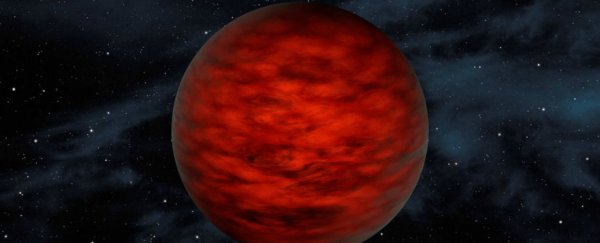To make sense of space, we tend to group things up. For example, our planet is a part of the Solar System, which is part of the Milky Way galaxy, which sits in the Laniakea region of the Universe, and so on. These groups are largely based on what orbits what. The Solar System is, in its most basic definition, a group of planets that orbit the Sun.
Doing this allows us to put everything in a place, even if that 'place' is constant motion around something else.
Then, in 2011, astronomers announced that this view wasn't necessarily accurate. Our Universe is actually filled with free-floating, loner planets that don't orbit anything and are completely alone in the vastness of space. But where did they come from? NASA might finally have the answer: they're actually brown dwarfs.
Using data from the Wide-field Infrared Survey Explorer (WISE) space telescope and the Two Micron All Sky Survey (2MASS), NASA was able to identify a new free-floating, planet-like object in a system of stars known as the TW Hydrae family, which is situated roughly 175 light-years from Earth.
This new 'planet', named WISEA J114724.10−204021.3 (or simply WISEA 1147), is about five to 10 times the size of Jupiter, NASA reports.
Since the stars around the newly found object are all young - about 10 million years old - the team is confident that the object is as well.
Also, planets typically take 10 million years to form, and countless more to get ejected from whatever star system they were a part of, which means that, based on the age of WISEA 1147, it can't actually be a planet. So what the heck is it?
According to NASA, the only option is that these mysterious masses are actually brown dwarfs. Caltech defines a brown dwarf as:
"[O]bjects which are too large to be called planets and too small to be stars. They have masses that range between twice the mass of Jupiter and the lower mass limit for nuclear reactions."
So they form just like stars, but aren't dense enough to burst to life.
Brown dwarfs are notoriously hard to spot because they are generally isolated and, as the name suggests, dim.
To find WISEA 1147, the team hunted down heat signals and observed how it moved over the course of 10 years. "The features on this one screamed out, 'I'm a young brown dwarf,'" said the University of Toledo's Adam Schneider.
The next step is for researchers to determine which of these free-floating planets are brown dwarfs and which are actual planets that somehow abandoned their home star systems - a task that's proven difficult in the past, since tracking down these loner masses is such a tricky feat to begin with.
The likely situation is that the Universe, like Los Angeles, is full of failed stars.
The team's findings are due to be published in The Astrophysical Journal, and you can access them now at arXiv.org.
